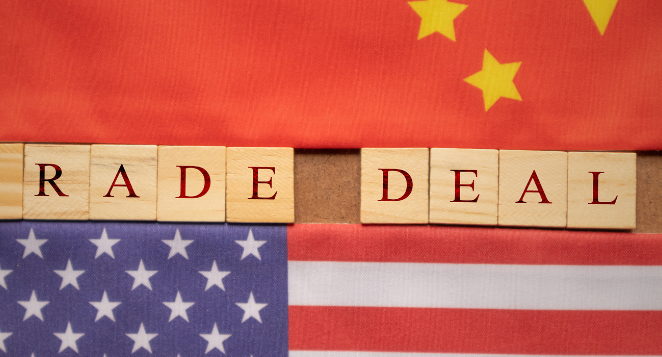Amid rising global competition between the US and China, Latin American nations are quietly reshaping trade partnerships, diversifying markets, and leveraging great power rivalry to their advantage.

Why Latin America’s Trade Deals Are Caught in the US-China Rivalry
As US-China tensions intensify in 2025 — from chip wars to sanctions to AI standards — an important but undercovered front is Latin America’s trade architecture.
The region has emerged as a key geo-economic battleground:
- The US is promoting “nearshoring” and “friend-shoring”, aiming to re-anchor supply chains closer to North America.
- China continues expanding its Belt & Road footprint and striking bilateral trade agreements.
- Latin American nations, in turn, are diversifying markets and seeking to balance relationships — often using the rivalry to extract better terms.
In short, US-China competition now directly shapes Latin America’s evolving trade map.
China’s Growing Influence in Latin America: https://worlddiplomacyhub.com/wp-admin/post.php?post=167&action=edit
How US Pressure Is Shifting Latin America’s Trade Strategy
Washington’s goal: reduce China’s trade dominance in the hemisphere and deepen US economic ties with Latin America.
Several levers are in play:
USMCA (US-Mexico-Canada Agreement)
- The USMCA has provisions that discourage Mexico from deepening China-linked supply chains — especially in sectors like automotive and electronics.
- US officials have quietly pressured Mexico to screen Chinese investments more carefully.
US diplomatic pressure
- In Brazil, Colombia, and Chile, US envoys are encouraging diversification away from excessive dependence on China.
- Security clauses around 5G networks and critical minerals are increasingly tied to US-led initiatives.
Americas Partnership for Economic Prosperity (APEP)
- Launched in late 2024, APEP is Washington’s flagship effort to create new trade and investment frameworks in Latin America.
- Though still in early stages, APEP seeks to link green energy, digital economy, and infrastructure projects with US-aligned standards.
China’s AI Engagement in Latin America: https://worlddiplomacyhub.com/wp-admin/post.php?post=164&action=edit
How China Is Deepening Its Trade Footprint in Latin America
Despite US efforts, China remains a dominant trade force in Latin America — and is expanding further in 2025.
#1 trade partner
- China is now the largest trading partner for several key countries: Brazil, Chile, Peru, Uruguay.
- For Argentina, China surpassed the US in trade volume by early 2025.
Belt & Road expansion
- Argentina formally joined Belt & Road in 2023 — opening channels for new Chinese infrastructure financing.
- Projects include rail modernization, energy grids, and logistics hubs.
Key sectors
- Lithium: China’s firms are aggressively investing in Argentina’s “Lithium Triangle”.
- Soybeans: Brazil and Argentina remain key suppliers to China’s food system.
- Copper: Chile and Peru ship the majority of their copper to Chinese buyers.
- Rare earths: Exploration projects in Brazil increasingly target the Chinese market.
- Infrastructure: Chinese state firms are building ports, dams, and smart cities across the region.
How Latin American Countries Are Adapting → Smart Trade Strategies
Latin American governments are not passive — they are adapting with pragmatic, country-specific strategies:
Brazil
- Under Lula, Brazil is balancing China and the US — deepening agricultural and mineral ties with China, while courting US green tech investment.
- Actively promoting BRICS trade cooperation.
Mexico
- Caught in a complex position due to USMCA pressures.
- While China is Mexico’s second-largest trade partner, supply chain shifts are pulling Mexico closer to US-led nearshoring networks.
- New electronics and EV manufacturing hubs in northern Mexico are heavily oriented toward US markets.
Argentina
- Deepening China ties through Belt & Road, while seeking to maintain access to US and European financial markets.
- Major focus on lithium exports to Chinese battery manufacturers.
Chile
- Pursuing a policy of strategic diversification — while China remains dominant in copper, Chile is opening new digital trade talks with the US and EU.
- Leveraging green hydrogen potential to attract Western investment.
Colombia
- Engaged in new trade discussions with the US under the APEP framework.
- Also exploring expanded links with China in agriculture and infrastructure — reflecting Colombia’s desire to maintain economic flexibility.
How Small Countries Are Using the US-China Rivalry to Their Advantage: https://worlddiplomacyhub.com/wp-admin/post.php?post=155&action=edit
Impact on Latin American Companies & Workers
Supply chain changes
- In Mexico, the nearshoring boom is reshaping industrial jobs — US-bound factory work is rising, while some China-linked assembly is shifting to other LATAM locations.
New FTA negotiations
- Several countries are entering new FTA talks — seeking market access, tariff advantages, and investment protection.
- Risks include compliance burdens (especially around labor and environmental standards) imposed by US and EU agreements.
Emerging sectors
- AI, digital economy, and green tech are new trade frontiers — with both the US and China pushing competing offers.
- LATAM startups face opportunities — but also complex decisions about tech standards and digital infrastructure partners.
5 Future Trends to Watch (2025–2030)
Will the region become bipolar (some US-aligned, some China-aligned)?
- Signs of emerging polarity are visible — though most nations prefer strategic flexibility.
Will US friend-shoring succeed?
- Mexico and some Central American nations are clear friend-shoring winners.
- In South America, results remain mixed.
How will Brazil position itself under Lula?
- Brazil seeks to maintain a non-aligned leadership role — but trade realities increasingly bind it to China in commodities.
How will AI, green energy shift the trade map?
- Green hydrogen, battery supply chains, and digital services are emerging areas where the US-EU bloc may gain ground.
Will LATAM nations use the rivalry for leverage (more favorable deals)?
- Increasingly yes — many governments are actively playing both sides to secure better financing, technology access, and investment terms.